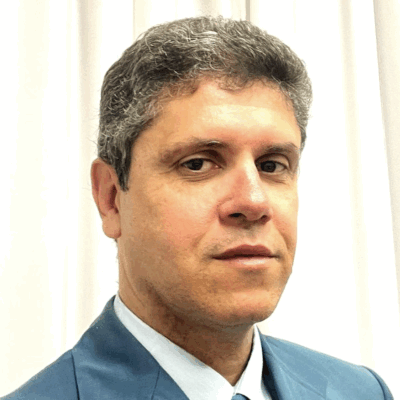The Ongoing Debate Over a Common Defence Industry in Italy
24 July 2025
For many years, Italy has been under pressure to increase its meagre defence spending and meet NATO defence spending targets. The EU and US have been pushing the country especially hard after the outbreak of the Ukraine-Russia war.
According to NATO figures, in 2024, Italian military spending stood at only 1.57 per cent of GDP, approximately €35 billion per year. Last April, Minister of Economy Giancarlo Giorgetti announced that spending would rise to 2% of GDP in 2025, following a review conducted according to NATO accounting methodology. To reach the new NATO spending target of 5%, Italy will have to exert a significantly stronger effort, almost tripling the current figure, gradually bringing it above € 100 billion per year. This means the country will have to find an additional € 6-7 billion each year, for an overall commitment estimated at around € 700 billion over ten years, according to calculations by the independent Observatory on Italian military spending: this is around € 220 billion more than what would be spent over ten years if the aim was to reach 2.0 percent in ‘core’ military spending. Even with the flexibility granted by NATO regarding timing, the effort remains impressive for a country struggling with its notorious problems of high public debt.
At The Hague NATO Summit, Prime Minister Giorgia Meloni positively commented on the commitment to increasing spending on defence and security up to 5% of GDP by 2035, labelling the choice as ‘sustainable for Italy’. The ten-year commitment must be renegotiated in 2029, as there are no mandatory annual increases for the allies, allowing choices to be made based on the economy’s progress. The Premier also excluded for 2026 the willingness of her government to activate the SGP’s ‘safeguard clause’, which has already been activated by twelve EU countries, including Germany, to enjoy an additional budgetary space of up to 1.5% of GDP.
The Prime Minister’s goal is to broaden the scope and the definition of ‘defence’. This must include, in her view, not only military spending but also the defence of borders, irregular migration, critical infrastructures, military mobility, infrastructures in the most general sense, artificial intelligence, research, and technological innovation. Many of these items have strong reflexes on Italian businesses.
More generally, the increase in defence spending presents a significant business opportunity for Italian companies, as a substantial portion of these resources will be allocated to strengthening Italian businesses, fostering an expansionary economic policy that will generate new resources, paving the way for a virtuous circle. It could also be a unique opportunity to convert and reshore some struggling businesses, such as the automotive industry.
The major challenge to address is the ability of Italian companies to respond readily and effectively. In this perspective, the leading business community Confindustria is already strengthening its defence business and research units to be prepared for the increase in forecasted investment. Furthermore, the three largest business communities in the EU (Confindustria, Germany’s BDE, and France’s MEDEF) are discussing the possibility of developing joint defence projects, exploiting the €150 billion of the EU’s SAFE fund. Among other things, this is an ideal opportunity to review EU procurement legislation to simplify and speed up procedures, and quickly launch tenders involving companies from different member states, thereby reducing defence-related imports from the US within a short period. It is also a unique opportunity for the creation of European defence champions, through the scaling up of activities of large companies already operating on the market or by creating larger companies through mergers and acquisitions (M&A) operations. The EU defence industry currently suffers from sub-optimality problems, meaning that many activities and services are duplicated because they are still carried out at a national level, which is a waste of financial resources and a great source of inefficiency. From this perspective, the introduction of EU-level tax breaks to encourage mergers and acquisitions of transnational companies would be welcomed.
From a technological development perspective, Italy is actively involved in the Global Combat Air Programme (GCAP), a trilateral project with the UK and Japan to develop a next-generation fighter jet. The country is also focusing on strengthening its aerospace industry, particularly in satellite development, to reduce operational times and consolidate its competitive advantage in the domain of space. Italy’s defence industry possesses strong dual-use capabilities, as its technologies can be applied to both military and civilian purposes. Given that the Italian economy is notoriously characterised by a network of SMEs, this ecosystem seems to be particularly suited to supporting the European defence industry develop technologies and weapons that do not require huge investments typical of heavy armaments, such as drones, a sector in which Italy is recognised for its world-class excellence.
As the recent war between Israel and Iran demonstrated, modern wars are increasingly fought in the air than on land. Missiles, fighter jets, and drones now play the lion’s share, to the detriment of tanks and ground forces. Furthermore, modern wars are increasingly fought using information technology, including cyberattacks, the dissemination of fake news, and the theft of sensitive data. From this perspective, Meloni’s suggestion to expand the scope of the defence business seems reasonable. This is why the EU should focus on strengthening these sectors as well.
Perhaps for the first time in the history of the EU, one truly gets the impression that the member countries, starting with major founding nations, intend to get serious about the creation of a common defence and a single army. The business world is ready to accept the challenge. Public and private financial resources are already available. Now it’s up to European leaders to make the next move, providing guidance to the defence industry on what kind of common defence to invest in. Italy’s industry will be ready.
ENJOYING THIS CONTENT
